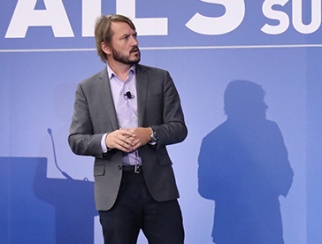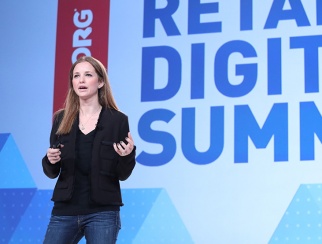The buzz at Retail’s Digital Summit, the 15th annual event hosted by Shop.org, was palpable. Thousands of digital retail insiders converged in Dallas last month to immerse themselves in learning, technology and networking. Vendors delivered new solutions while speakers challenged attendees to disrupt the norm and push the boundaries of retail.
The day-long Digital Marketing Workshop that kicked off the summit yielded a “top five” of best practices including a clear understanding of mobile key performance indicators, a well-defined view of the customer and a keen understanding of how to balance human and machine learning. But that was only the beginning — here are just a handful of additional takeaways from the event.
Drop the ‘e’ and capitalize the ‘c’ — it’s all about Commerce
Summit attendees were on a dual mission. Striving to eliminate the word “omnichannel” from their lexicon and to break the habit of referring to e-commerce as a separate channel of business, they bantered about unified commerce, commerce anywhere and — one of the newer terms — cognitive commerce.
While the retail industry may never be able to retire the omnichannel jargon, what matters far more is delivering a seamless shopping experience for consumers. HSNi CEO Mindy Grossman describes her vision as boundaryless retail. “We’ve entered the age of boundaryless retail – a world devoid of artificial barriers, driven by innovation and collaboration, where we leverage the power of technology to create a seamless experience for consumers.” Grossman says HSNi is platform-agnostic and audience-centric, refusing to cling to any particular channel.
While many others aspire to a similar view, getting there requires robust inventory and order management systems that support a buy, fulfill and return-anywhere strategy. The industry has been talking about the “order management imperative” for years now, emphasizing its critical role in nurturing a loyal customer base. Too many “buy online, pick up in store” and “buy online, ship from store” horror stories surfaced in 2015. Customers won’t tolerate it this coming holiday season. Order glitches are so 2005.

PSFK’s Piers Fawkes (pictured) and Scott Lachut shared “10 pillars of the new digital shopping experience” at Retail’s Digital Summit.
Don’t under estimate social media’s might
Piers Fawkes of innovation consulting firm PSFK believes the future of retail looks a lot more social. Not many folks would argue would that view.
The industry is immersed in a new era of engaging, relevant and vibrant commerce and the most astute players are coming up with unique social strategies to influence the shoppers they covet most. Though most still say shoppers’ appetite for social commerce pales in comparison with online or physical mediums, the ubiquity of mobile — along with research showing that consumers rely on social media when making a purchasing decision — has rendered social media indispensable.
There’s no one-size-fits-all approach to building social connections. Retailers need to choose the right channel based on their customers. Whether that’s Snapchat or Instagram, YouTube or Facebook depends on the shoppers that retailers are targeting. Getting it right will foster transparency and a sense of authenticity; getting is wrong will result in lackluster returns.
The social media landscape is undergoing a transformation. Fawkes describes it as a digital connector, capable of cultivating connections between retailers and brands and connections between brands and content resources that create meaningful partnerships.

Google’s Sophie Miller (pictured) and Sephora’s Johnna Marcus showed how AR and VR are experiences, not screens.
Virtual reality check
Virtual and augmented reality promise to take the immersive customer journey to new heights, but Mitch Joel, president of global digital marketing agency Mirum, issued a reality check. Is it coming? Yes. Will we get there soon? Yes, but probably not as quickly as the hype would lead one to believe.
Joel considers VR and AR to be a “complete game-changer when it comes to how [the industry] can tell better brand stories and how [shoppers] can experience brands in a more profound way,” and he encouraged attendees to start experimenting now.
Joel says VR and AR allow the shopper to move within and through the retail experience without physically being in a store. Moreover, it’s possible to deploy VR in a bricks-and-mortar setting, using the technology to change how products are merchandised, creating an “endless aisle.” In theory, the technology could also allow retailers to customize each shopper's experience.
Like most new retail technologies, deploying AR/VR for technology’s sake is not a strategy. The application can and should be used to solve a consumer’s problems; it should naturally extend the brand’s connection to the consumer. Who’s getting it right? Lowe’s, Wayfair and Sephora, to name just a few.
Mobile is the starting point for digital engagement and the creation of a mobile-first culture is key.
Mobile is a mainstay
If there was one pervasive theme that seemed to weave through the Digital Summit, it was this: Mobile is the starting point for digital engagement and the creation of a mobile-first culture is key. Smartphone traffic is expected to increase tenfold from 2014 to 2019 and the mobile economy already accounts for 4.2 percent of global GDP — not to mention the fact that smartphone owners look at their devices 150-200 times every day.
Facebook Director of Product Marketing Maz Sharafi considers mobile to be a consumer behavior, not a technology or channel. He shared some stats: 90 percent of people access a mobile device while shopping, 74 percent of millennials take action after being influenced by a mobile post and 49 percent of store purchases are influenced by digital interactions. A vast majority of consumers’ first impressions happen on mobile. Sharafi insists that even though shoppers may ultimately make a purchase on a desktop computer or in a store, retailers must have a mobile-first mindset.
See more trends and retail stories from Retail’s Digital Summit: Check out the official event recap.